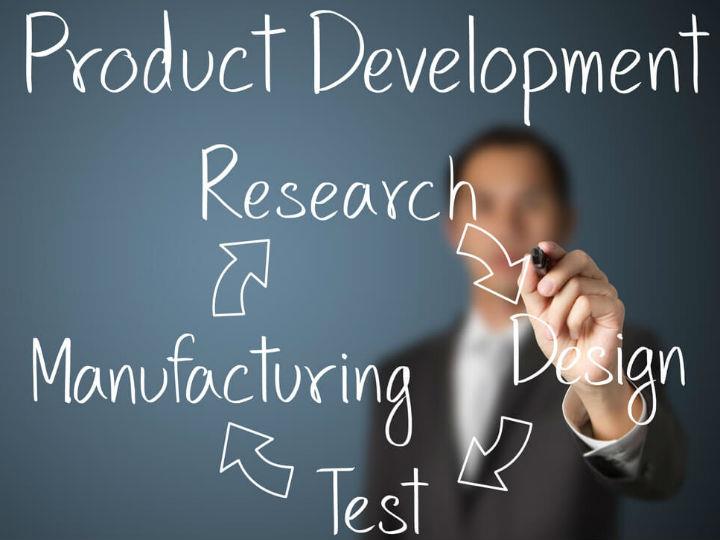by Andreas Gernert*
In 2006, Netflix CEO Reed Hastings was keen on improving the software his firm used to recommend movies to users. Not that his in-house engineers were slouches – far from it – but he wanted fresh ideas. To get them, he created a global contest called the Netflix Prize: Whoever could come up with an algorithm 10 percent better than the existing one would win US$1 million, plus a non-exclusive licensing agreement with Netflix.
News of the competition reached far and wide. Yes, the prize money was a motivator, but also, Netflix was giving every nerd out there a chance to toy around with an exceptional dataset – more than 100 million ratings of 18,000 movies from half a million (anonymised) users. Some 30,000 contest participants set out to work. The team that ultimately won reported putting in more than 2,000 hours of work just in the first year. It took them three years.
Does this mean that every firm that seeks to subcontract a new product development project should leverage competition among suppliers and ask them to engage in R&D in parallel? Or are there instances where a firm should first invite offers and commit to a single supplier for that project? Sebastian Heese (Poole College of Management), David Wuttke (TUM School of Management) and I applied game theory and computer simulations of buyer-seller scenarios involving multiple suppliers to answer these questions.
As we show in our recent paper, “Subcontracting New Product Development Projects: The Role of Competition and Commitment”, the decision should be based on a holistic view of the project and its supply chain environment. The two most critical factors are the fixed costs of development as well as the level of innovation sought. In other words, can suppliers easily engage in development or will they incur hefty upfront costs (e.g. heavy machinery)? And does the project require a lot of exploration or is it about marginally improving a somewhat narrow specification?
Maximising the pool of suppliers for the best outcome
Going back to the Netflix Prize, it was a perfect example of a project suited for what we call a “development-first” approach, as opposed to a “commitment-first” approach. Contest participants did need technical skills (and some free time), but otherwise the only resource required was a computer that could download the dataset (about 2 GB). Fixed costs were no hindrance.
Then, the fact that it took three years for a team of highly skilled engineers to come up with a winning solution proves that the problem demanded considerable exploration. Going in, no one knew what the final algorithm would look like. Indeed, many contestants ended up completing an unofficial crash course on “machine learning”, which was still a somewhat obscure sub-branch of computer science at the time. The degree of innovation was high indeed.
On the other hand, if developing the product requires large capital outlays, an open contest a la Netflix would risk attracting too few suppliers. The contestants might be able to infer this much and, if selected, come to the bargaining table with long, bared teeth. In these circumstances, a firm would be better off asking for bids and committing to a particular supplier from the beginning. Such an approach would relieve the potential suppliers’ worry about incurring high fixed costs (with no guaranteed return), which would attract more of them.
If the product only requires somewhat small tweaks – e.g. making an oven 5 percent more energy-efficient – your potential suppliers would also know that many of their competitors can achieve such a result. As such, they may worry that throngs of suppliers might join an open contest and it would be unlikely that the chosen supplier could provide a highly differentiated product able to command juicy margins. Many might balk at that prospect, driving down the number and quality of suppliers entering the pool. In such a case, it is preferable to ask for bids and commit to a sole supplier ahead of the development phase.
When a project combines high upfront costs with just marginal room for innovation, without fail, a firm should commit to a supplier before development begins. In addition, we found that variable costs, such as the personnel that might need to be assigned to a project, also impact the willingness of suppliers to participate in a development-first project, but this factor is not as critical as the project’s fixed costs and degree of innovation. One reason is that in an open contest, suppliers can always adjust the variable costs they put in, based on their expectations of how many suppliers they are competing against, and how differentiated a solution they think they can come up with.
Development contests can yield amazing results, but watch out for nuances
Aside from managerial insights (more on that below), our paper has implications for policymakers. In industries rife with opportunities for innovation, governments should subsidise variable costs (such as staffing), in order to maximise the number of suppliers able to contribute fresh ideas. Such industries might include pharmaceuticals and tech-related ones.
In more mature industries, it may not be as important to support every supplier. Take the automotive industry in Germany. A few strong suppliers would suffice to make the customer experience a little bit better, or the cars somewhat lighter and safer. Regulators should be more open to mergers and acquisitions in these industries, and make them more difficult where more exploration could lead to significant breakthroughs.
Not so long ago, firms, especially large ones, kept all their R&D efforts in-house. But in these lean times, outsourcing becomes an attractive option. First of all, engineers tend to be an expensive resource and sometimes, those on a firm’s payroll might have developed deep expertise when new solutions probably require accessing broader knowledge.
Although Netflix ultimately did not adopt the prize-winning tech due to the engineering effort required, the experiment proved that drawing on a large crowd can be the key to success. If two heads are better than one, how about a whole supply chain’s worth? For certain projects, the answer is, well, a no-brainer. In R&D matters, too many firms – and industries – just keep on doing what they’ve always done. It is a pity. Applying just a little more nuance could unlock so much innovation.
Firms have to look very closely at their development project ecosystem when selecting the right procurement approach. It will affect not only the project’s price tag, but the quality of the outcome. Project managers must examine all dimensions, which includes their supplier pool, the variable and fixed costs, the degree of innovation and even the learning benefits associated with the development of the product.
As the New York Times reported shortly after the Netflix Prize was won, the chief executive of a consulting company specialising in data analytics had assigned some of his leading researchers to work on the contest for two years. They didn’t win, but he said: “We’ve already had a $10 million payoff internally from what we’ve learned.” Remember that 30,000 people took part in this coding tournament. Talk about a multiplier effect.
*Post-Doctoral Research Fellow in the Technology and Operations Management area of INSEAD
**first published in: knowledge.insead.edu




 By: N. Peter Kramer
By: N. Peter Kramer

